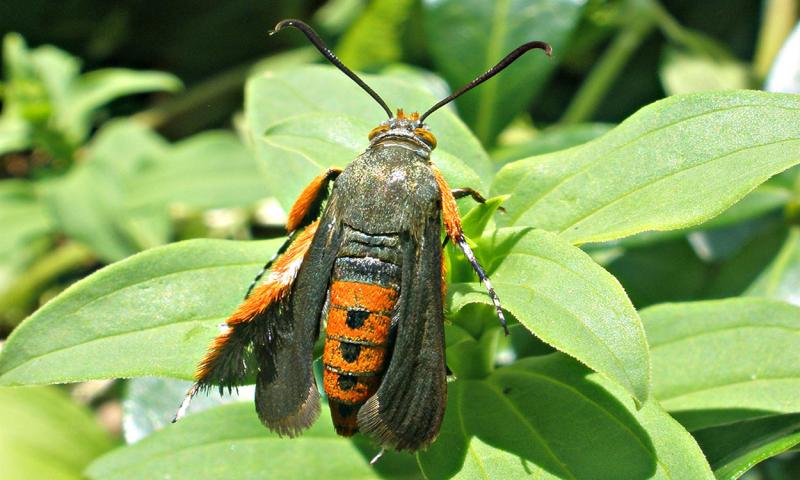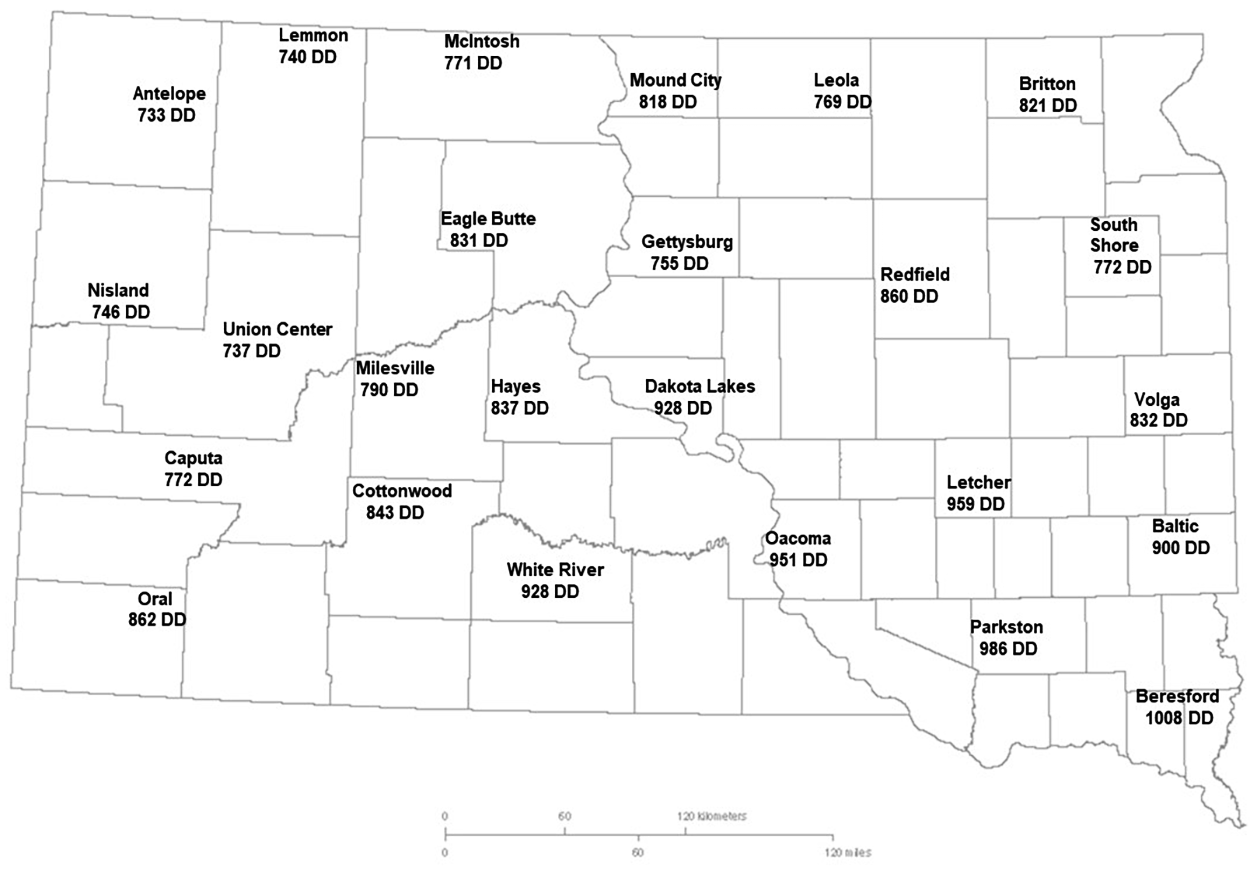
Originally Submitted: June 28, 2023
Written collaboratively by Adam Varenhorst, Amanda Bachmann, Philip Rozeboom, Patrick Wagner, and Brad McManus.
Gardens throughout South Dakota are well underway, and the activity of one of the major pests of squash plants isn’t far off. Squash vine borers can cause healthy squash plants to deteriorate rapidly after infestation occurs.
Latest Activity Estimates
Currently, moth emergence is likely occurring in the Beresford, South Dakota area (Figure 1). Based on the forecasted temperatures for next week, squash vine borer moths will begin to emerge across much of South Dakota. Early detection of squash vine borer moth activity is important. Once moths are observed in a garden, the base of squash plants either needs to be treated or monitored for the presence of squash vine borer eggs.

| Accumulated Degree Days |
Squash Vine Borer Activity |
|---|---|
| 1000 | Moths will emerge from soil |
| 1245 to 1300 | Eggs will hatch |
| 1905 to 1960 | Caterpillars will feed within plants |
| 2650 to 2705 | Possible second generation of moths emerge |
Predicting Activity With Degree Days
The emergence of squash vine borer moths can be estimated by using degree days with a developmental threshold of 50 degrees Fahrenheit. As mentioned previously, the squash vine borer moths emerge from the soil when 1000 degree days accumulate. Once eggs are laid on the stems of host plants, they require another 245 to 300 degree days to hatch. After hatching, the new larvae quickly enter the squash stem. The larvae will feed inside the plant for another 660 degree days. The larvae will then emerge from the plants and burrow into the soil to pupate. The pupae require an additional 745 degree days before the next moths emerge. We don’t normally see a second generation of squash vine borers in South Dakota, but it is possible.
As a reminder, the equation for degree days is:
(Maximum daily temperature + Minimum daily temperature) ÷ 2 - The Developmental Threshold
You can check the base 50-degree days at a weather station near you using the SDSU Mesonet degree days tool.


